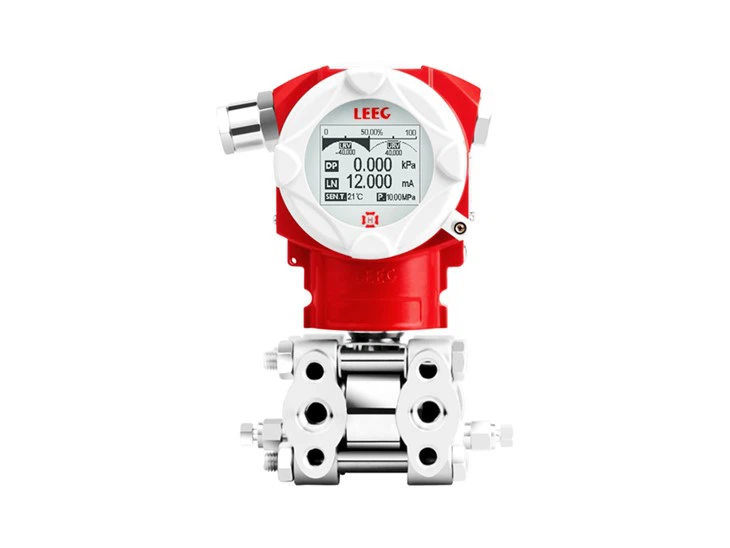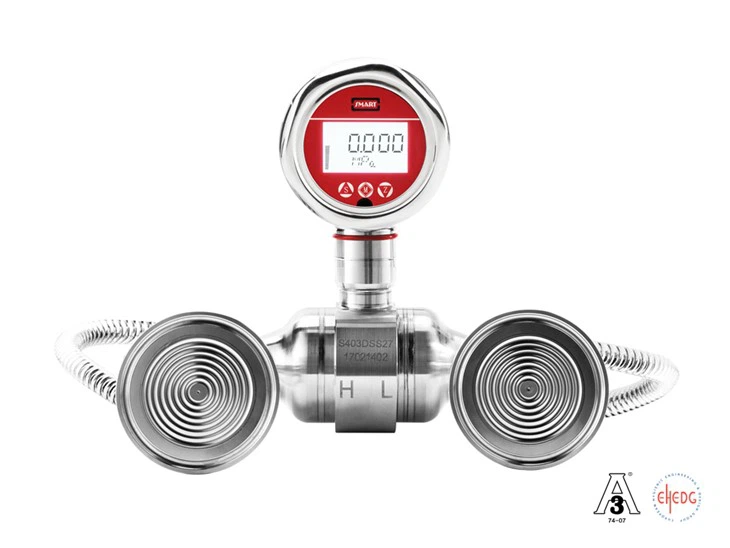As a leading domestic manufacturer of smart transmitters, LEEG Instruments specializes in the R&D and production of hydrostatic level transmitters, providing high-precision level measurement solutions for industries such as petrochemicals, power energy, pharmaceuticals, food processing, environmental water treatment, metallurgy, papermaking, and marine shipping. Our hydrostatic level transmitters are based on the principle of hydrostatic pressure, enabling accurate measurement of liquid levels in both open and closed containers. They suit corrosive media, high-temperature and high-pressure conditions, and complex working environments, ensuring reliable and safe process control.
LEEG Instruments offers a comprehensive range of hydrostatic level measurement products, including single-flange level transmitters (for atmospheric or low-pressure containers), double-flange differential pressure transmitters (designed for pressurized closed containers with automatic gas-phase pressure compensation), and submersible level transmitters (for open environments such as wells and water tanks). With outstanding stability, anti-interference capability, and long-life design, our products are widely used in critical applications such as oil and gas storage tanks, boiler drums, reactors, wastewater treatment pools, and food fermentation tanks, supporting industrial automation and intelligent upgrades.
Single-Flange Level Transmitter
The LEEG Instruments single-flange level transmitter employs high-precision sensors and is directly mounted on the container's flange interface, making it suitable for level measurement in atmospheric or low-pressure environments. With a compact structure and easy installation, this product is particularly well-suited for storage tanks and reactors in industries such as petrochemicals and food and pharmaceuticals. By measuring hydrostatic pressure, the transmitter provides accurate level signals and features excellent corrosion resistance and impact resistance, ensuring long-term stable operation in harsh media such as strong acids and alkalis.
Double-Flange Differential Pressure Transmitter
The LEEG Instruments double-flange differential pressure transmitter is specifically designed for pressurized closed containers. It utilizes a high-low pressure side flange structure to automatically eliminate the interference of gas-phase pressure on level measurement. Widely used in critical equipment such as boiler drums and high-pressure reactors in the power and metallurgy industries, this product delivers high-precision and stable level monitoring. Its unique diaphragm isolation technology and high-temperature resistance design make it suitable for complex working conditions involving high temperatures, high pressures, and media prone to crystallization or viscosity, ensuring accurate and reliable data.
Submersible Level Transmitter
The LEEG Instruments submersible level transmitter features an integrated sealed design and can be directly immersed in liquid to measure hydrostatic level, making it suitable for open environments such as deep wells, reservoirs, and wastewater treatment pools. With an IP68 protection rating, strong corrosion resistance, and excellent anti-interference capability, this product is ideal for applications in environmental water treatment, agricultural irrigation, and marine monitoring. Its sensitive pressure sensing element and stable signal output enable real-time level monitoring, while support for multiple output options meets the automation control needs of various scenarios.
Hydrostatic Level Measurement Principle
Hydrostatic level measurement is based on the principle of hydrostatics, where the liquid column height (h) is proportional to the hydrostatic pressure (P), as expressed by the formula P = ρ·g·h (ρ is the liquid density, and g is the gravitational acceleration). The transmitter calculates the liquid level by detecting the hydrostatic pressure at the bottom of the container, making it suitable for both open and closed containers. Due to its direct measurement method and simple structure, hydrostatic level transmitters are widely used in various industrial applications. However, factors such as changes in media density and gas-phase pressure (in closed containers) must be considered to ensure measurement accuracy.
How to Choose the Most Suitable Level Transmitter?
1. Container Type:
Open containers (water pools, tanks): Use submersible level transmitters for direct hydrostatic pressure measurement without compensation.
Pressurized closed containers (reactors, storage tanks): Use double-flange differential pressure transmitters to offset gas-phase pressure effects via high-low pressure side flanges.
High-temperature/high-viscosity media: Opt for single-flange transmitters with extension tubes to prevent direct media contact with the sensor.
2.Media Characteristics:
Corrosive media → Choose corrosion-resistant materials (e.g., 316L, Hastelloy).
Crystallization-prone/viscous media → Use diaphragm isolation or flush-mounted designs.
3.Installation Environment:
Deep wells/underground water pools → Submersible (IP68 protection).
High-pressure/high-temperature conditions → Double-flange (with heat sinks or remote seals).
Typical Applications of Level Transmitters
1.Petrochemicals: Level monitoring in storage tanks and reactors (explosion-proof design).
2.Power Energy: Water level control in boiler drums (suitable for high temperatures and pressures).
3.Environmental Water Treatment: Level measurement in sewage pools and reservoirs (corrosion-resistant submersible type).
4.Food and Pharmaceuticals: Fermentation tanks and sanitary containers (hygienic flange design).
5.Marine Shipping: Level management in ballast tanks and fuel tanks (vibration-resistant design).














